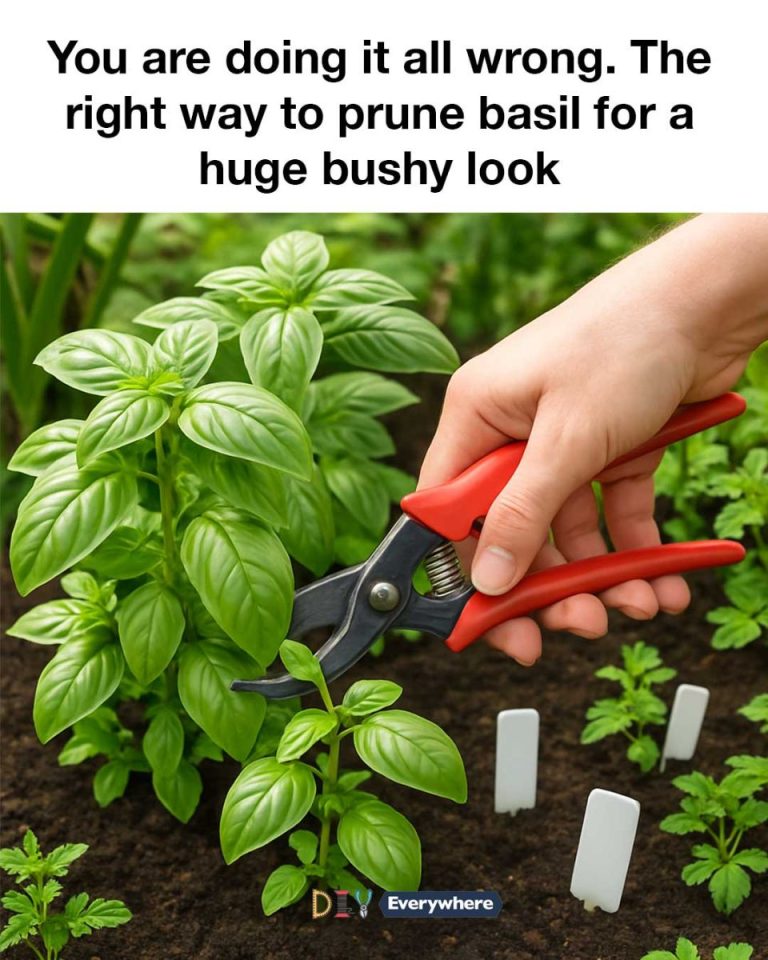ADVERTISEMENT
You are doing it all wrong. The right way to prune basil for a huge bushy look

After pruning, it’s important to provide your basil plant with the right conditions to encourage new growth. Ensure it receives plenty of sunlight, ideally 6-8 hours a day. Water the plant regularly, but avoid overwatering, as basil prefers well-drained soil.
Consider feeding your basil with a balanced liquid fertilizer every few weeks to provide the nutrients it needs to recover and thrive. With the right care, your basil will quickly bounce back from pruning and continue to produce abundant foliage.
10. Seasonal Considerations for Basil Pruning
Basil is a warm-season herb, and its growth slows down as temperatures drop. In cooler climates, it’s important to adjust your pruning schedule as the season changes. As fall approaches, reduce the frequency of pruning to allow the plant to conserve energy.
If you’re growing basil indoors during the winter, continue to prune regularly, but be mindful of the reduced light levels. Provide supplemental lighting if necessary to maintain healthy growth. In all seasons, monitor your plant closely and adjust your care routine as needed.
11. Troubleshooting: What to Do If Your Basil Isn’t Thriving
If your basil isn’t thriving despite regular pruning, there may be other factors at play. Check for signs of pests, such as aphids or spider mites, which can damage the plant and hinder growth. Use insecticidal soap or neem oil to address infestations.
Ensure your basil is receiving adequate sunlight and water. If the leaves are yellowing, it may be a sign of overwatering or nutrient deficiency. Adjust your watering schedule and consider adding a balanced fertilizer to boost the plant’s health.
Finally, evaluate the plant’s environment. Basil prefers warm temperatures and high humidity. If your plant is indoors, consider using a humidifier or placing a tray of water nearby to increase humidity levels.